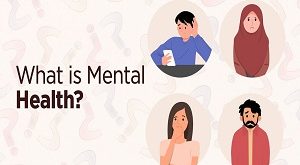Health represents a state of complete physical, mental, and emotional well-being. The purpose of healthcare is to support people in achieving wellness across these essential life areas. According to the Centers for Disease Control and Prevention (CDC), U.S. healthcare expenses reached $3.5 trillion in 2017.
Despite this substantial spending, Americans generally experience lower life expectancy than individuals in other developed nations. This outcome can be attributed to various factors, such as healthcare accessibility and lifestyle choices.
Achieving good health is vital for managing stress and living a longer, active life. In this article, we’ll explore what good health means, the key areas of health, and strategies for maintaining wellness.
Defining Health
In 1948, the World Health Organization (WHO) described health as “a state of complete physical, mental, and social well-being, not merely the absence of disease or infirmity.” This definition is still widely used today. In 1986, WHO clarified that health is a resource to enhance individual functioning within society rather than an ultimate goal. Living healthfully enables a person to lead a fulfilling life, rich in purpose.

In 2009, researchers in The Lancet defined health as the body’s ability to adapt to new challenges and health conditions. This perspective reflects how recent scientific advances have deepened our understanding of diseases, how they function, and ways to manage or prevent them, recognizing that complete freedom from disease may be unattainable.
Types of Health
The most commonly discussed types of health are mental and physical. However, spiritual, emotional, and financial health are also significant, contributing to overall well-being. For example, financial security can reduce stress, while spiritual wellness may provide calmness and purpose, supporting mental health.
For those interested in health equity, resources are available to help address social disparities and suggest ways to improve health access.
Physical Health
Good physical health is characterized by efficient bodily functions and processes, not merely the absence of disease. It involves regular physical activity, balanced nutrition, and sufficient rest. Maintaining physical health also includes taking steps to prevent injury or illness, such as:
- Reducing workplace hazards
- Practicing safe sex
- Following good hygiene habits
- Avoiding tobacco, alcohol, and illegal drugs
- Staying updated with recommended vaccinations
Physical and mental health are interrelated. For instance, mental health conditions like depression may increase the likelihood of substance abuse, negatively impacting physical health.
Mental Health
Mental health encompasses emotional, social, and psychological wellness and is just as essential to a fulfilling life as physical health. Defining mental health is complex since diagnoses often rely on personal experiences. Nevertheless, medical advancements allow doctors to identify physical markers of some mental conditions through scans and genetic testing.
Good mental health is not just the absence of mental disorders but also includes a person’s ability to enjoy life, bounce back from challenges, balance life’s aspects, feel secure, and reach their potential.
Both physical and mental health are interconnected. A chronic illness can impact daily functioning, potentially leading to depression, while mental health conditions like anorexia can affect body weight and physical functioning.
Factors Affecting Health
Numerous factors influence overall health:
- Genetics: Genes can play a role in predisposition to certain health conditions.
- Environment: Environmental factors can impact health independently or may trigger illness in genetically susceptible individuals.
The WHO states that the following elements significantly affect health:
- Living conditions
- Environmental Quality
- Income level
- Education level
- Employment status
For example, people with higher socioeconomic status (SES) tend to have better health outcomes, higher education, and access to quality healthcare. On the other hand, those with lower SES may face stress from financial strain, unemployment, or social discrimination.
Preserving Health
The best approach to health is to practice a wellness-focused lifestyle rather than waiting to address health issues when they arise. WHO describes wellness as the “optimal state of health” and stresses the importance of realizing one’s physical, psychological, social, and spiritual potential.
Steps to enhance wellness include:
- Eating a balanced diet
- Engaging in regular exercise (150 minutes per week per the American Heart Association)
- Regular health screenings
- Learning stress management techniques
- Participating in meaningful activities
- Building supportive relationships
- Staying positive
- Establishing and practicing personal values
Each person’s health journey is unique, with individual goals and strategies to achieve them. While it may not be possible to avoid all illnesses, one can develop resilience and prepare the mind and body to cope with health challenges as they come.
The World Health Organization (WHO) defines health inequity as “systematic differences in the health status of different population groups.” This means that certain populations experience poorer health and face greater barriers to healthcare due to the structures that shape their lives.
For instance, economic and political systems can contribute to poverty. People born in impoverished areas often have limited access to safe housing, clean water, nutritious food, education, and healthcare—all of which are essential to good health. This creates an avoidable and unfair divide among groups, highlighting the need for policy changes to address these issues.
Health inequity exists at local, national, and global levels, impacting every country.
Is Health Inequity the Same as Health Inequality or Disparity?
Although similar-sounding, health inequity, and health inequality have distinct meanings. Inequity refers to unfair, preventable inequalities that stem from societal factors rather than natural causes. In contrast, inequality simply points to uneven resource distribution. For example, age-related health differences typically represent health inequality, as it is natural for younger people to generally have better health than older adults. Therefore, this is not usually a case of health inequity.
Disparity, on the other hand, simply means a difference without specifically implying unfairness. For example, disparities in infant mortality rates across social or racial groups are often due to inequity, as these differences aren’t medically justified but reflect systemic issues.
Examples of Health Inequity
Here are some specific ways health inequity affects individuals:
- Lower Life Expectancy: Life expectancy can vary significantly based on where a person is born, heavily influenced by socioeconomic status. For example, children born in Sierra Leone, West Africa, have a life expectancy of around 50 years, while those born in Japan can expect to live to about 84. Such differences are a result of varying living conditions, income, and healthcare availability. This issue also exists in wealthier countries. In Glasgow, UK, men’s life expectancy varies by up to 15.5 years depending on their neighborhood.
- Higher Rates of Mental Illness: Health inequity can lead to chronic stress, affecting both mental and physical health. The Youth Risk Behavior Study (2009–2019) found that LGBTQ+ youth in the U.S. experienced higher rates of bullying and violence than heterosexual youth, leading to increased mental health issues and suicide rates. Mental health struggles and feeling unsafe can hinder people’s ability to work, study, or seek help.
- Limited Access to Healthcare: Bias, prejudice, and discrimination can delay diagnoses and treatment. Studies show women, for example, wait longer for care in emergency departments than men and often experience delays in treatment for conditions like bleeding disorders and lupus. Furthermore, a lack of awareness regarding the differences in heart attack symptoms between men and women leads to higher misdiagnosis rates for women, which can be fatal.
- Preventable Death: Health inequity results in preventable deaths. One clear example is the disparity in infant health and mortality between Black and white infants in the U.S. Black infants have higher rates of low birth weight and infant mortality, a pattern not linked to biological factors but to systemic inequities.
Root Causes of Health Inequity

Health inequity stems from human-made systems that prioritize certain groups while under-resourcing or even oppressing others, often through unequal power and resource distribution. Examples of these structures include:
- Racism: Allocates more power and resources to one racial group over others, often affecting historically marginalized groups.
- Sexism: Favors one gender over others, with men often receiving more privileges.
- Classism: Privileges those with wealth and social standing, disadvantaging those with fewer resources.
- Xenophobia: Gives nonimmigrants more rights and power than immigrants.
- Heterosexism: Places heterosexuality above other sexual orientations.
- Ableism: Prioritizes able-bodied people over those with disabilities.
These systems intersect and mutually reinforce one another. People uphold these systems at various levels, including:
- Institutional Level: Laws, policies, and organizational practices set by institutions and governments.
- Interpersonal Level: Individual behavior toward others.
- Internal Level: How people perceive themselves and their value.
The outcomes of these systems are social, environmental, and economic differences that contribute to health inequity.
The Impact of Health Inequity
Health inequity harms everyone, not only those it directly impacts. It can lead to:
- Difficulty containing and treating infectious diseases.
- Higher rates of crime and violence.
- Increased substance abuse.
- Greater stress and anxiety erode social bonds.
- Lower productivity and tax revenue.
- Pushing 100 million people into poverty yearly and preventing half of the global population from accessing needed healthcare.
- Billions of dollars in healthcare costs in the U.S., raising expenses for everyone.
For those directly affected by health inequity, the consequences extend beyond their lifetimes, impacting future generations both physically and psychologically.
What Would Health Equity Look Like?
Health equity represents a system that enables everyone to achieve a high standard of health and healthcare. To reach health equity, we must address the sources of health inequity and provide individualized care based on specific needs, giving more resources to those who have less.
In the healthcare sector, this could mean:
- Financial risk protection for those who pay for healthcare.
- Affordable medication and vaccine costs.
- Flexible appointment options for people with unconventional work hours.
- Mobile health services for those in remote areas.
- Easy access to translators and caregivers.
- Education for healthcare providers on how inequity impacts patient care.
- Financial and social support for medical students from diverse backgrounds.
Achieving health equity also requires societal change, including:
- Investing in underserved areas and communities.
- Addressing environmental pollution and enacting protective laws.
- Ensuring access to nutritious food, particularly in food deserts.
- Removing barriers to education, like period poverty.
- Providing safe and accessible housing and workplaces.
- Guaranteeing access to parks and green spaces for exercise.

